How, When & Why Babies Communicate & Why Your Baby Squeals Instead of Babbling
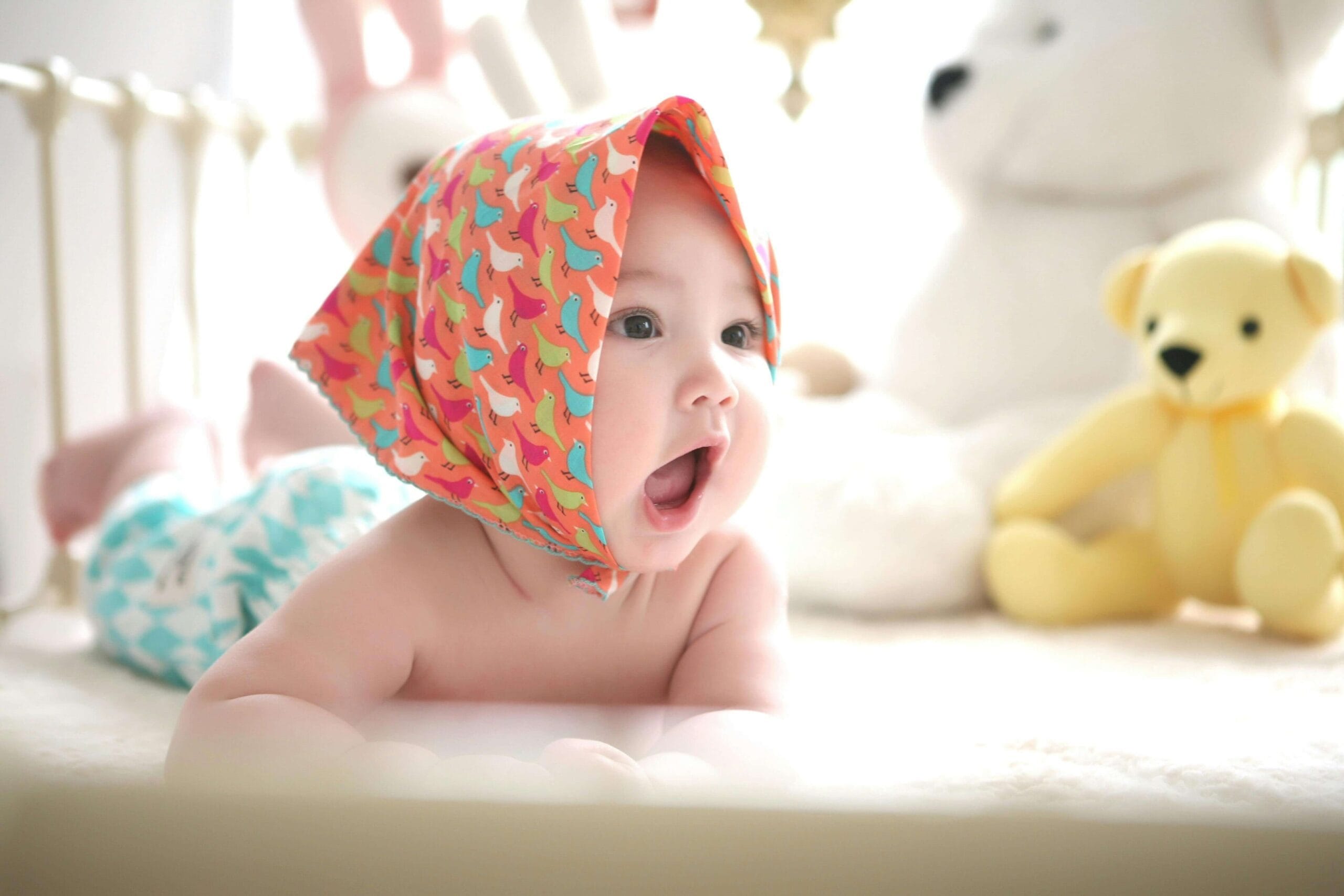
Babies are born with a rather pronounced ability to communicate their needs. As they grow, they will shout, scream, squeal, babble all sorts in-between. Is most of their shouting necessary? Probably not. But they all do it, and as parents we all have to endure it and figure out just what is going on with our beloved babies.
This article will explore the different types of baby sounds, from crying and gurgling to cooing, babbling, and eventually talking. It also provides a timeline of vocal milestones, detailing the phases of language development, and how their vocalizations evolve over time. We'll examine the reasons why babies communicate the way they do, and provide tips for parents and caregivers on how to encourage language development. Enjoy!

What Does Baby Talk Sound Like?
Babies produce sound from an early age, practicing mouth movements and basic sounds that are adorable, frustrating, or sometimes confusing. So it's worth covering all the different varieties of baby talk you should expect to hear.
| Grunting, Gurgling, Crying & Squealing | These sounds are reflexive responses to hunger, discomfort, or other needs. While they do not represent intentional speech development, they are an important way for infants to express their feelings and to work on their mouth and vocal cord control. |
| Cooing | These are soft, adorable, vowel sounds such as "ooo" and "ahh." Unlike crying, cooing is often a sign of contentment and engagement. |
| Babbling | Babbling includes repetitive consonant sounds such as "a-da" and "ma-ma." This stage is crucial for language development as babies start imitating sounds and experimenting with intonations. |
| Talking | Recognisable, bonafide first words, such as "mama" or "dada". Cooing and babbling have helped prepare them for understanding and producing these real word sounds, but cooing and babbling decrease from here as your child learns more recognisable words. |
Even the silliest sounds that children produce will fall into one of these types of pre-language play. Of course all babies develop differently, but their individual baby talk will likely explore all of the above types. However if you're hearing less babbling sounds and more cooing, or more squealing and less babbling, you don't necessarily need to worry about your baby's language development - all babies learn at their own pace and other children will practice and develop differently from your own unique and wonderful child
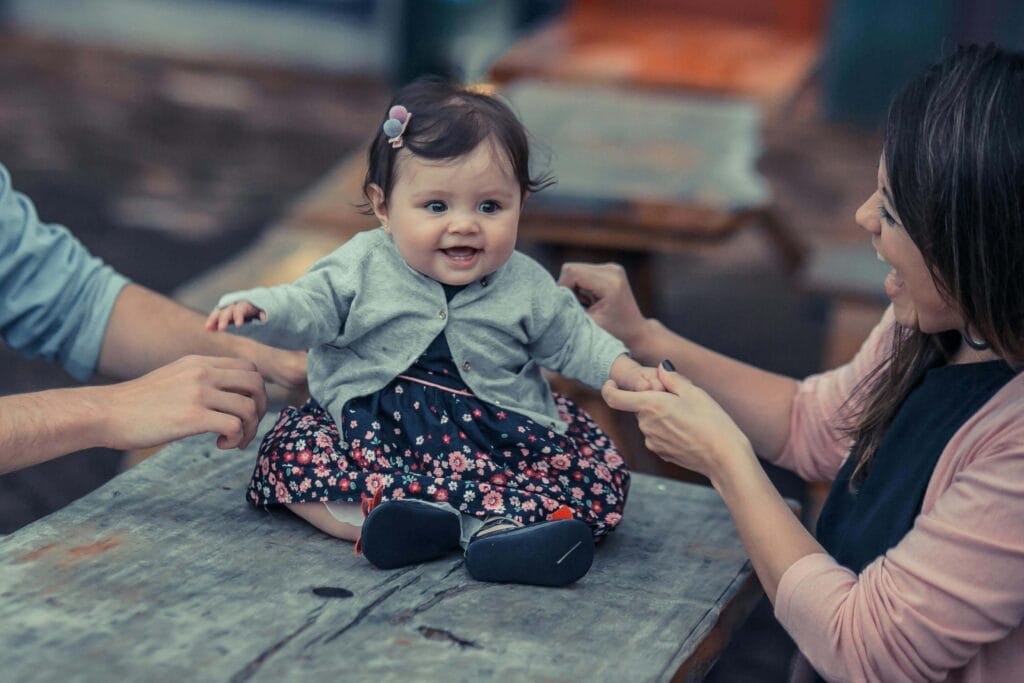
When Will my Child's Baby Talk Progress?
From babbling sounds to basic words, typically developing children go through each type of baby talk within their first 12-18 months of life. Understanding when these these stages occur can help parents know what to expect at different months of age as your child grows. Broadly, the stages are:
| Birth to 6 Weeks: Reflexive Sounds | Newborns primarily communicate through crying, grunting, gurgling and squealing. These types of sound production are reflexive and babies produce them due to hunger, discomfort, or other needs. While true cooing has not yet begun, babies may occasionally make small, accidental vowel sounds or consonant sounds. |
| 6 to 8 Weeks: The First Cooing Sounds | Around 6 to 8 weeks, most babies begin making intentional cooing sounds. These soft, vowel noises like "ooo" and "ahh" are the true start babies developing expressive language. At this stage, babies make sounds like cooing as a response to comfort, attention, and social interaction. |
| 2 to 4 Months: Increased Vocalisation | As babies reach 2 to 4 months, a babies cooing becomes more frequent. They experiment with their communication skills by using pitch, volume, and tone to produce a variety of sounds. This period is crucial for early language comprehension as babies start responding more actively to voices and expressions as their vocal cords develop. |
| 4 to 6 Months: Transition to Babbling | Between 4 to 6 months, babies start babbling and transitioning away from cooing. This baby babble adds consonant sounds such as "ba," "da," and "ma." Often this is referred to as "canonical babbling." By practicing canonical babbling, babies learn how to create more word like sounds. |
| 6 to 12 Months: Advanced Sounds and Imitation | After 6 months of age, babies refine their single syllable babbling into repeated syllables and more advanced forms of baby babble. They imitate sounds they hear from parents and caregivers and start "variegated babbling." This includes linking different consonants together, like "da ba", or "ma ba". Towards the end of this phase, your baby's language will also begin becoming what is know as "conversational babbling." This refers to babbling that mimics native language, with your baby mimicking the adult speech patterns, rhythms and intonations that it hears |
| 12+ Months: First Words | By around 12 months, your baby should begin combining the single syllable vowel sounds, canonical babbling and conversational babbling they've been practicing into genuine language acquisition. Most babies start with words like "ma ma" or "da da.", adding new words in their own time. |

Please note, babies begin moving through these stages at their own pace, and the language progress two babies of the same age should not be compared! Some children may focus more on some vowel sounds than others, other babies may produce baby babble sooner, others still may start babbling later. Language skills simply develop at different paces. When Albert Einstein was a baby, his parents actually though he had a developmental disorder because he didn't start talking until much later than other children. So your baby not babbling yet at 6 months of age doesn't mean they're not going to grow up to be any less intelligent than anyone else! They may even be a genius.
However, a delay in a baby's babbling can sometimes be associated with developmental disorders like autism. If your baby is 8 months old and not yet babbling, you may want to consult a paediatrician
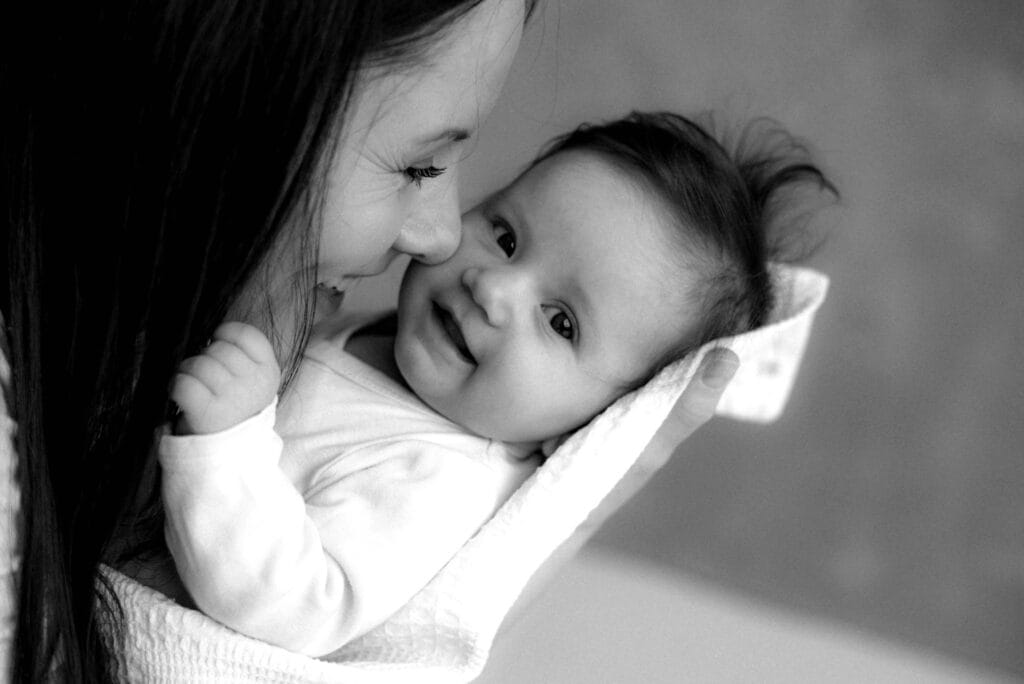
Why Do Babies Make Cooing and Babbling Sounds?
Much of this article has already touched on the reasons why babies communicate the way they do, and you don't have to be a speech language pathologist to understand why babies make sounds:
| Early Communication | Cooing and baby babble help communicate some of their needs, such as when they're hungry. |
| Social Bonding | Babies bond with their parents and caregiver through their baby talk. Particularly when they're responded to with smiles and speech, it reinforces the social bond between the person and the baby, and helps babies feel and develop bonds with others. |
| Cognitive & Language Development | Practicing sounds helps babies become familiar with and explore speech patterns, tone, and rhythm - forming the foundation for future language learning while developing control over their vocal cords. |
| Emotional Expression | Cooing and babbling along with general grunting, gurgling and crying are part of how babies express their feelings. For example, some babies may coo to express happiness, or babble when they're excited. |
| Responding to Stimuli | Babies often make different sounds in response to external stimuli such as a caregiver’s voice, a favourite toy, or a familiar melody. This indicates that babies are becoming more aware of their environment. |
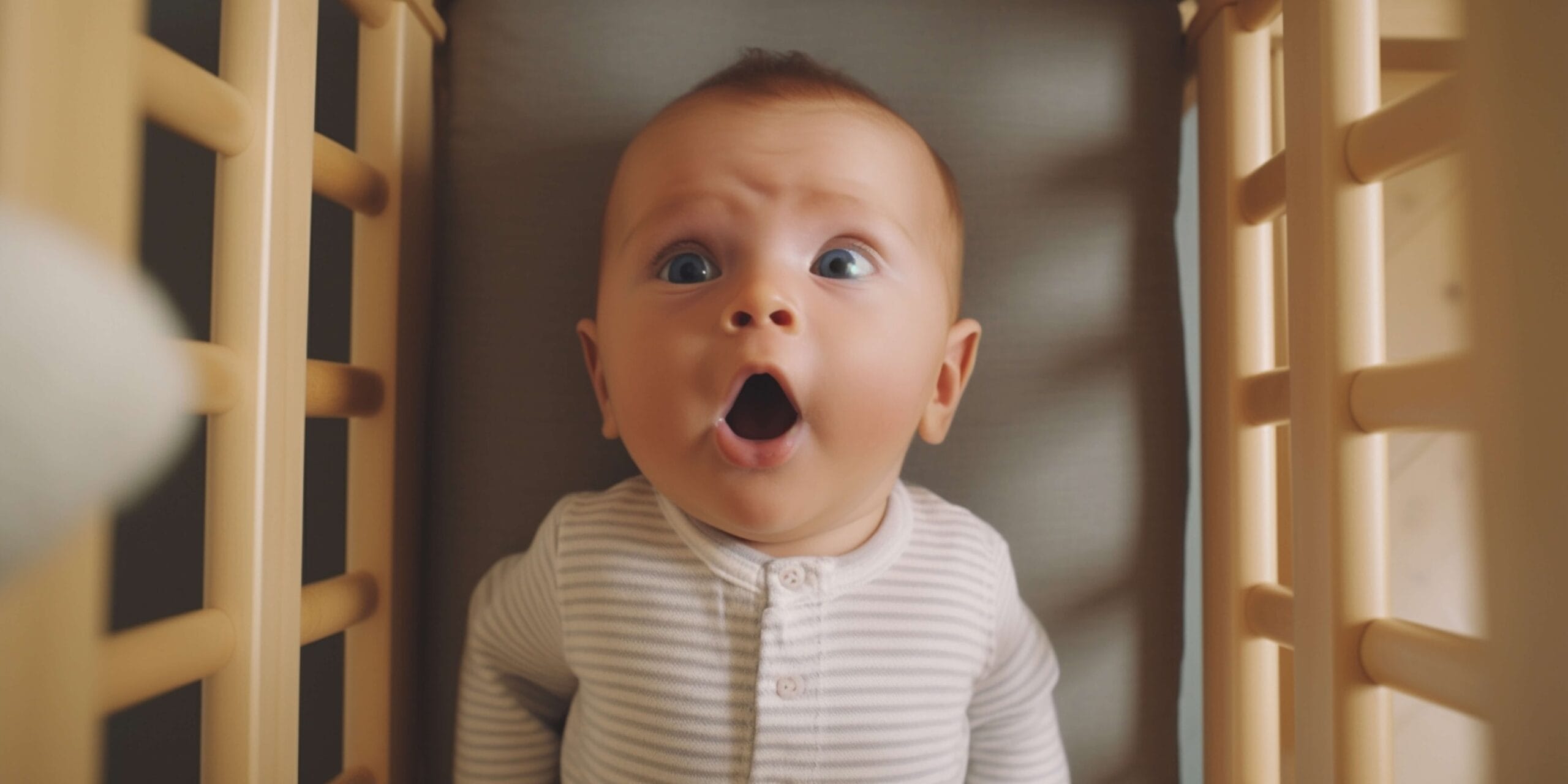
Encouraging Baby Language Skill Development
There's many ways you can help a baby with their language development. As a child's speech sounds progress, make sure to try each of these:
| Respond With Words | Engage in "conversations" with your baby by responding to them with real words. This interaction teaches them the give-and-take nature of communication and helps expose them to different word sounds. |
| Respond With Gestures | When conversing with your baby, add in facial expressions and hand gestures alongside the language you use. This helps them learn to associate words with more than just sounds, helping them remember and attach meaning to words more quickly. |
| Respond With Sounds | Many babies love when others imitate and expand upon their own coos and babble. Doing this can encourage them to explore more types of coos and babbles (e.g., like introducing them to "da" after "ma"). |
| Play Music for Them | Music has been shown to improve babies auditory and language processing abilities. Singing to your baby in particular helps expose them to different tones and rhythms, such as teaching them what the same word sounds like when hearing it at different pitches. |
| Introduce New Sounds to Them | Bring your babies to different environments with sounds like conversation, animals, cars, the outdoors, and just about anything else you can think of. These experiences all help your baby learn more about sound and how to process what they hear. |
| Read Stories Together | Reading simple stories using an expressive voice will captivate many babies and will help them hear and process even more language alongside help and relevant visual stimuli. |
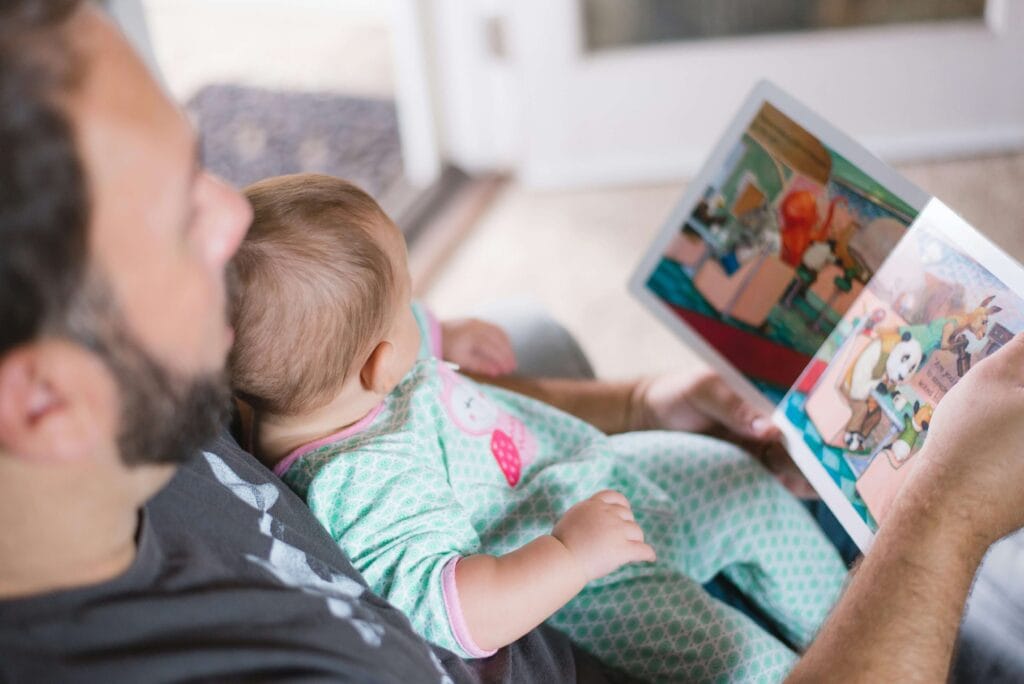
Fun Activities to Promote Baby Babble & Cooing
Most of the above methods of promoting a child's language development can be combined into fun activities. Some activities you may want to try are:
| Singing & Nursery Rhymes | Songs with repetitive sounds encourage babies to mimic tones and rhythms. Even if you're not a talented singer, by default you're going to be one of the best your baby has ever heard! |
| Tummy Time & Vocal Play | Laying babies on their tummy while engaging in vocal play strengthens muscles used in speech while helping them practice an essential skill. |
| Mirror Play & Imitation Games | Showing babies their reflection while making cooing sounds can encourage your baby to imitate your sounds. |
| Gentle Tickling & Laughter-Based Interaction | Positive physical interaction often elicits cooing responses from babies, so a gentle belly tickle may do just the trick. |
| Peek a boo with Cooing | Almost every baby will laugh at peek a boo, and you can always introduce them to different vowel sounds as you play with them. |
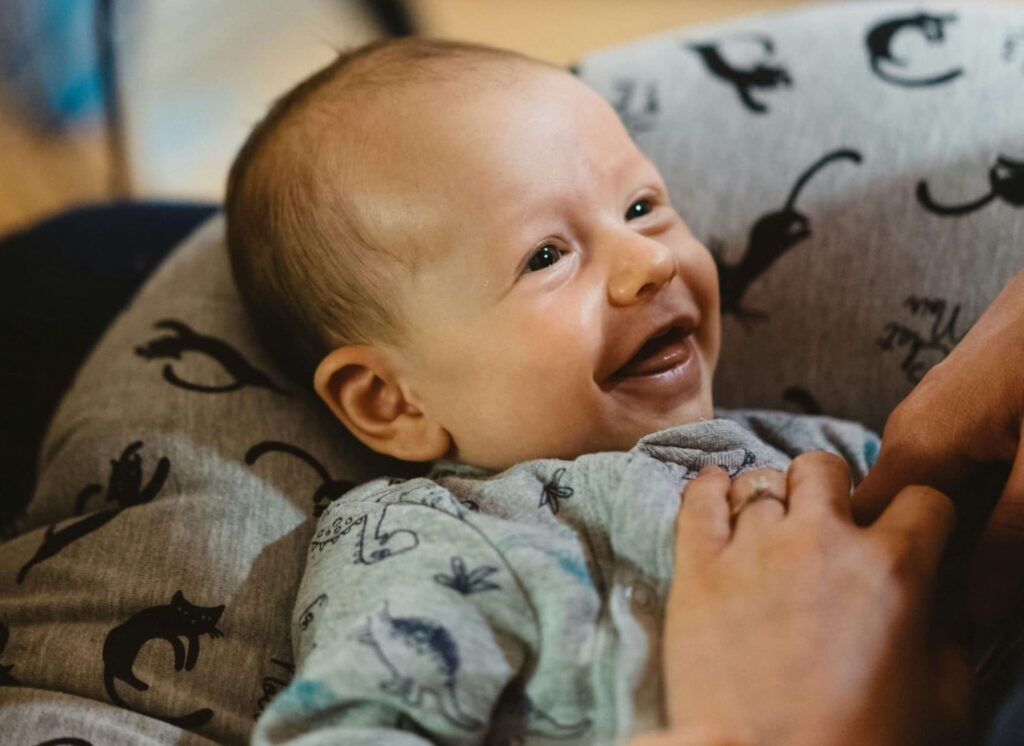
Babies will continue to cry, grunt, gurgle and indeed squeal (sometimes rather loudly!) throughout their first year of life. It's possible your baby feels they can communicate their feelings and wants quite effectively with these noises, and they may use babbles or coos less because of it. Additionally, your baby may learn more by listening rather than by imitating. These differences are generally nothing to worry about. However, if it's been longer than a couple months past when they were expected to start cooing or babbling, you may want to check with a paediatrician just to be safe. Again though - it happens more often than you might think. Many of these stages can genuinely blur together somewhat.
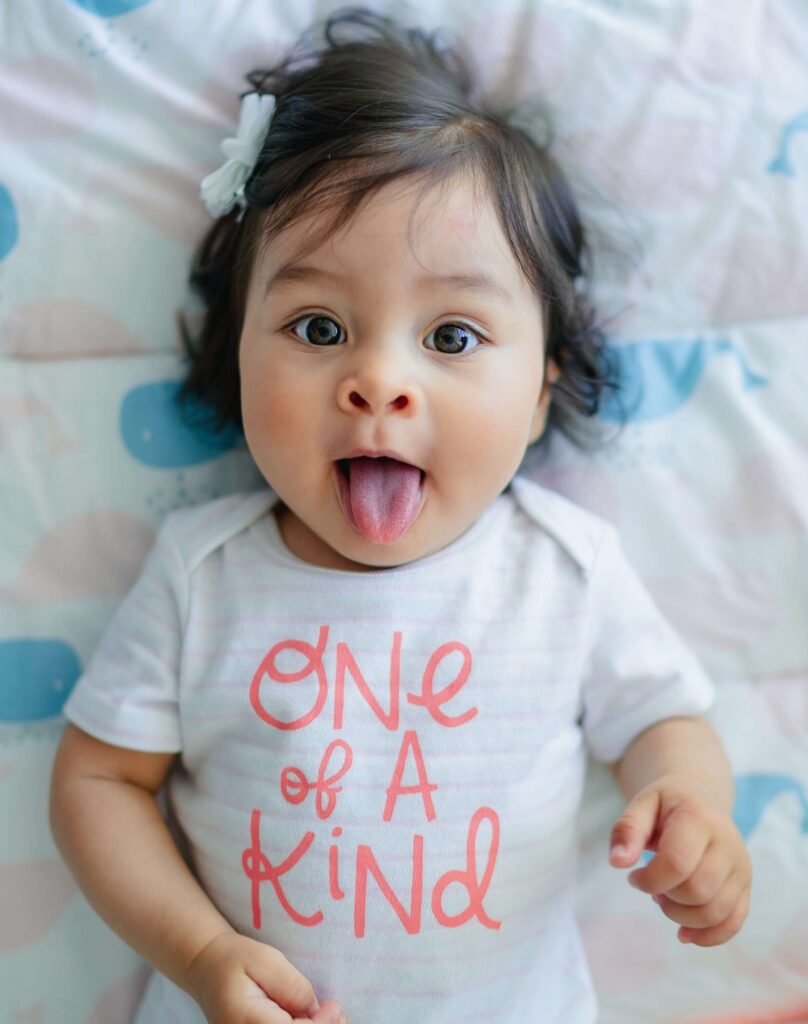
Speech and language development is a journey that is over almost as quickly as your baby started it. So savour the journey, and make the most of it while you can. Hopefully you understand a bit more about how, when why babies communicate the way they do, and how to help your babies language skills develop. If there's anything you'd like us to write about, please do reach out! Thanks for reading.
Other Similar Articles
If you want to read more about this topic, below are some articles we'd also recommend checking out:

